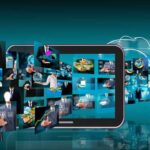Digital Leadership

The Appleton Greene Corporate Training Program (CTP) for Digital Leadership is provided by Mr. Blain Certified Learning Provider (CLP). Program Specifications: Monthly cost USD$2,500.00; Monthly Workshops 6 hours; Monthly Support 4 hours; Program Duration 13 months; Program orders subject to ongoing availability.

Personal Profile
TO BE ADVISED
To request further information about Mr. Blain through Appleton Greene, please Click Here.
(CLP) Programs
Appleton Greene corporate training programs are all process-driven. They are used as vehicles to implement tangible business processes within clients’ organizations, together with training, support and facilitation during the use of these processes. Corporate training programs are therefore implemented over a sustainable period of time, that is to say, between 1 year (incorporating 12 monthly workshops), and 4 years (incorporating 48 monthly workshops). Your program information guide will specify how long each program takes to complete. Each monthly workshop takes 6 hours to implement and can be undertaken either on the client’s premises, an Appleton Greene serviced office, or online via the internet. This enables clients to implement each part of their business process, before moving onto the next stage of the program and enables employees to plan their study time around their current work commitments. The result is far greater program benefit, over a more sustainable period of time and a significantly improved return on investment.
Appleton Greene uses standard and bespoke corporate training programs as vessels to transfer business process improvement knowledge into the heart of our clients’ organizations. Each individual program focuses upon the implementation of a specific business process, which enables clients to easily quantify their return on investment. There are hundreds of established Appleton Greene corporate training products now available to clients within customer services, e-business, finance, globalization, human resources, information technology, legal, management, marketing and production. It does not matter whether a client’s employees are located within one office, or an unlimited number of international offices, we can still bring them together to learn and implement specific business processes collectively. Our approach to global localization enables us to provide clients with a truly international service with that all important personal touch. Appleton Greene corporate training programs can be provided virtually or locally and they are all unique in that they individually focus upon a specific business function. All (CLP) programs are implemented over a sustainable period of time, usually between 1-4 years, incorporating 12-48 monthly workshops and professional support is consistently provided during this time by qualified learning providers and where appropriate, by Accredited Consultants.
Executive summary
Digital Leadership
The need for Digital Leadership
This is the course for leaders in the age of business transformation. It will equip them with strategic execution tools, and – importantly – the vision, the mindset and the personal resources to lead in the 21st century, from both the digital and all-important human perspectives.
The already dizzying pace of Industry 4.0, the digital era, has been accelerated through the pandemic of the early 2020s, and many leaders have had to scramble to react.
This is despite technologies such as artificial intelligence (AI), cloud computing, robotics, 3D printing, the Internet of Things, and advanced wireless transforming the way business gets done, and how the leadership of modern organizations has evolved.
Fast-forward to today, and with the advent of remote and hybrid working, a blended distributed workforce and other major forces impacting our organizations, adopting digital is a must-do, not a nice-to-do. For those leaders still resisting change, there is a risk of being left behind and failing altogether, unless they rapidly evolve their own knowledge, skills and behaviors for the demands of modern business, and prove their ability to navigate the future successfully.
The Digital Leadership program aims to fast-track leaders’ development through practical, action-oriented workshops, which focus on leadership skillset evolution, the impact of leaders on others, and the protection of the bottom line for years to come.
The combination of digital evolution and know-how, coupled with a strong human touch, is at the heart of our Digital Leadership journey. This powerful combination represents a collection of must-have attributes for 21st Century leaders who want to succeed in the modern workplace.

Beyond Digital: Whole business transformation
To compete in this highly complex, fast-paced and competitive landscape, leaders need to understand how to develop and execute strategy in a digital world. This requires a holistic approach that is implementation-centered.
Adopting digital is not an option; it’s compulsory — just as at the turn of the century when adopting the internet was not optional. And yet, according to Forbes and IBM, 84% of digital transformations still fail.
The reason for this is that it is not just about digital: we need to expand the meaning of digital transformation to include a whole business model transformation. It is about people, customers, culture, business model adaption, digitalization, the present and the future.
It’s not about having a digital strategy but a strategy for a digital world.
The Digital Leadership program is the pathway for leaders to success in the modern workplace, workforce and ways of working.

What do we mean by Digital Leadership?
Digital leadership means engaging with all the different transformational centers of the business – human as well as digital, customers as well as employees.
Leaders are now under pressure to bring together all of these different centers, in the midst of a rapidly transforming and unpredictable world, which is being further fueled by a perfect storm of factors:
1. The need to adopt digitalization more rapidly.
2. Leadership readiness and capability for the challenges of the modern workplace.
3. An organizational culture that is fit for purpose.
4. The changing shape of the workforce and ways of working.
5. Broader equity, diversity and inclusion lenses that require active leadership.
There is a need, for some leaders, to unlearn 20th Century thinking and practice, and to go on a new learning journey: acquiring the mindset, knowledge, and skills for success in the 21st Century.

The journey from ‘what’ to ‘how’
The program will balance the need for leaders to adopt digital, in line with the evolving needs of the business and stakeholders, and the essential human-centered leadership dimensions critical to bringing an engaged, mobilized and motivated workforce on the journey.
It will take leaders on a mindset shifting, active transformation journey. It will be action-oriented and will enable them to develop their own successful digitalization strategy and implementation program, paralleled by their personal leadership development journey and growth.
It will challenge leaders to unlearn old habits and relearn the knowledge, skills and behaviors most suited for tomorrow’s workplace, today.
This program will equip leaders with skills in: data-driven decision making; agile, hybrid or remote leadership; enabling digital ecosystems; and empowered working. These are just some of the new capabilities that are now required at all levels, not just for executive leaders. This is already narrowing the skills gap between executive leaders and employees who are more ‘tech and touch’ savvy, reflecting the need for flatter structures that facilitate greater empowerment and leadership at all levels.
This more modern approach of distributed leadership ensures that more people are contributing more of the time to business health and growth.
The Digital Leadership program will be made up of five parts, representing a 13-session learning journey:
1. Mindset and transformation journey
The program begins with a focus on vision and strategy, supported by ways of modeling and thinking about digital transformation. These first modules will give leaders the foundation for stepping back and assessing the wider context, their organizational readiness as well as personal readiness, and how to create their strategic change roadmap for digital implementation and leadership.
2. Digital leadership – adopting digitalization
Next comes a focus on implementation. We will cover strategies for dealing with digital disruption and change both within and externally. We will encourage leaders to reflect with their peer group on the deeper purpose drivers for their business, and to reflect on themselves personally as a leader for the digital era.
Using the Ticking Clock implementation model, those on this program will plan and workshop their digital strategy implementation roadmap with other leaders, gaining valuable peer feedback.
3. Human-centred leadership for a digital, distributed world
The paradox of digital transformation is that, at its heart, it is not about technology: it is about people, and the cultural change that is necessary for the whole business to transform. The human component of leadership is now firmly under the microscope. This program will equip leaders with the skills and tools needed to model the values and behaviours expected in business today, for example:
• Putting equity, diversity and inclusion at the heart of the organization.
• Doing more than paying ‘lip service’ to physical and mental wellbeing.
• Demonstrating greater empathy and humanity.
• Being able to balance purpose, profit and people.
• Authentic leadership, including the ability to demonstrate compassion, vulnerability, resilience and courage in an increasingly unpredictable landscape.
4. Empowering leadership: Unleashing leaders at all levels
Everyone has the potential to be a leader in a digital world. In these modules, we will cover new tools and techniques for unleashing the power within people at all levels, driving meaningful collaboration and innovation, supported by leaders and managers who are committed to a growth mindset, powered up by a coaching culture. The foundations for this include:
• Creating the conditions to make distributed leadership a reality; enabling a new age of empowerment across the organization.
• An organizational assessment to identify leaders at all levels.
• A 90-day roadmap for empowered individuals, measured from Day One, and supported by line management coaching to accelerate success.
5. Leadership for a digital world
Leading in a digital world is not just about technology, or just about culture, or just
about people, or just about customers: it is about all of these.
We will look at best-in-class leadership journeys and aim to bring experts and leaders who have been through the journey to our session. This will facilitate experience share and help us consolidate the entire Digital Leadership journey.
At the end of this journey, leaders will have developed strong digital leadership know-how, ensuring they and their teams are equipped with the most appropriate knowledge, skills and behaviours for success in the Industry 4.0 era. The digital era. And the digital leadership journey starts here…
Curriculum
Digital Leadership – Part 1 – Year 1
- Part 1 Month 1 Leading in a digital world: Embrace a transformational mindset
- Part 1 Month 2 Your digitalization strategy: Benchmarking for successful transformation
- Part 1 Month 3 Your strategic digitalization journey: The Ticking Clock© and the 3 strategic stages
- Part 1 Month 4 Implementing digitalization (part i): Ticking Clock© implementation steps 1-6
- Part 1 Month 5 Implementing digitalization (part ii): Ticking clock© implementation steps 7-11
- Part 1 Month 6 Digital leadership – Your digital leadership journey and actions so far: Measuring organizational and personal progress
- Part 1 Month 7 The resilient leader: Building resilience in self and others in the hybrid workplace
- Part 1 Month 8 Enlightened leadership for the digital era: The new leadership superpowers for the decade ahead
- Part 1 Month 9 Putting yourself out there: Building your expert, human-centered personal brand (internally and externally)
- Part 1 Month 10 Leading a multidimensional workforce: Broader diversity. Borderless working. A fit for purpose culture
- Part 1 Month 11 Leading with a growth mindset: Creating a strong coaching culture to underpin success
- Part 1 Month 12 Making distributed leadership a reality: Leading a new age of empowerment in your organization
Digital Leadership – Part 2 – Year 2
- Part 2 Month 1 Leadership reimagined: Balancing the ‘tech and the touch’ in the modern, fast-paced, unpredictable workplace
Program Objectives
The following list represents the Key Program Objectives (KPO) for the Appleton Greene Digital Leadership corporate training program.
Digital Leadership – Part 1 – Year 1
Workshop 1: Leading in a digital world: Embrace a transformational mindset
Objective: This workshop will enable leaders to embrace the transformational mindset necessary for the journey ahead. By the end of the session, leaders will be equipped with a solid framework for developing a transformational mindset, key actionable points, and a game plan for you to put into action.
Workshop content:
We live and work in a world of unprecedented change and disruption. Transformation is happening in every area and aspect of our lives. To be able to navigate the challenges ahead, leaders must possess a transformational mindset: a mindset that enables them to embrace uncertainty, make agile data-driven decisions and implement strategy effectively and efficiently. Leaders must, at the same time, retain a strong human touch, with empathy and the ability to engage and empower others to work towards a common purpose.
This workshop will establish the rationale for a leadership mindset shift in the against a background of the changing market dynamics above. Leaders attending will be equipped with the know-how to blend strong digital skill-sets with an unparalleled human touch.
This workshop will, therefore, further outline what human-centered leadership means, in the context of a changing workforce and changing ways of working.
Leaders will complete the Digital Maturity Assessment which will enable them to pinpoint their Leadershift / capability and relative speed of transformation action in both digital and human-centered terms.
By the end of this workshop, leaders attending will have an appreciation of the relationship between the challenges leaders face today and the unquestionable need for a transformational mindset to navigate tomorrow. Leaders will also learn the attributes and traits of successful leaders who have embraced a transformational mindset and are leading the way, now.

Workshop 2: Your digitalization strategy: Benchmarking for successful transformation
Objective: This workshop will enable leaders to compare the current state of their organization through a comprehensive best-in-class benchmarking exercise with up to 40 corporations worldwide. This will enable each leader attending to build a strategic change map of where they are now, where they need to be and how to get there successfully. The workshop output will be a step-by-step change execution process which attending leaders will lead and implement throughout this digital leadership learning journey.
Workshop content:
Leaders will have the opportunity to complete an organizational benchmark assessment (against 40 best-in-class companies) and learn from a case study of an organization that has navigated digital transformation successfully; from an executive leader’s perspective and from employee and customer perspectives. Leaders will then build their own strategic change map, defining their own context, journey, and outcomes.
The case study and benchmarking activity will enable each leader attending the program to select the new and best practices most appropriate for their own business, in line with their own needs and change required. This will be enhanced through a collaborative workshop to help each participant define their plan, stress test each change item, refine their action roadmap and establish next steps to implement following the workshop.
The output from this workshop will be a comprehensive process map for actions going forward, for each leader attending, in parallel with the Digital Leadership learning journey they will continue.

Workshop 3: Your strategic digitalization journey: The Ticking Clock© and the 3 strategic stages
Objective: This workshop will ensure that leaders are prepared for the digital transformation journey – and are clear on their digitalization roadmap outcomes and their critical success factors. This will provide the foundation for the journey to follow in process terms to help all participants keep the big picture goals in mind, as much as the operational must-haves.
Workshop content:
This workshop details strategic steps 1-3 of the Ticking Clock© Digitalization roadmap for business transformation. These are:
– Stage 1: Future thinking
– Stage 2: Customer and operational centricity
– Stage 3: Future ready
The workshop will cover digitalization myth busting and explore critical leadership questions to answer at strategic level, as preparation for success in implementation terms. We will introduce the unique Ticking Clock© digitalization implementation model for leaders and start the journey for all participants.
The workshop will further be an opportunity for a stress test a leader’s digital change map and consider a leader’s journey to adopt digitalization. This will be deepened through encouraging the development of clear vision for a digitized, yet human centered future; by understanding the main operational components that must be in place to enable successful execution of the strategy at all levels; and by encouraging all leaders consider the importance of being data driven, in order to ‘future-proof’ the organization.

Workshop 4: Implementing digitalization (part i): Ticking Clock© implementation steps 1-6M
Objective: Now that the 3 strategic stages have been completed and actioned, workshop 4 with help leaders fast-track their initial operational implementation journey. This will be achieved by developing a rolling 90-day execution road map, which will include actions at leadership level and with others, specifically for steps 1-6 of the Ticking Clock© digital leadership implementation model.
Workshop content:
This is an action learning workshop which covers implementation steps 1-6 of the Ticking Clock© Digitalization roadmap for leaders.
– Step 1: Establish your digital vision
– Step 2: Development your leadership digital mindset
– Step 3: Build your architecture and evolve ecosystems
– Step 4: Restructure to a data-first culture
– Step 5: Protect your customers’ trust
– Step 6: Become customer obsessed
This will move from the strategic stage to build operational detail into all participating leaders’ digital transformation journeys. Leaders will lay the core foundations including digital architecture and ecosystems within their organization, establishing a “data first” culture, and placing customers at the heart of the business in an era of digital transformation. This is achieved through first creating a vision which is suited to a digitized world and the implications for leaders, the existing business model, forward strategy and the all-importance implementation plans that will be actioned following the workshop.

Workshop 5: Implementing digitalization (part ii): Ticking clock© implementation steps 7-11
Objective: Now that the 3 strategic stages and first 6 operational execution steps of the Ticking Clock© model have been actioned, we will share each leader’s journey so far and complete the 90-roadmap, through creating action plans for operational execution steps 7-11 of the Ticking Clock© digitalization model for leaders.
Workshop content:
This workshop will be highly collaborative and will cover Ticking Clock© implementation steps 7-11.
– Step 7: Adopt Agile
– Step 8: Learn to experiment and co-create
– Step 9: Empower employees
– Step 10: Measure digital value
– Step 11: Prescribe your future
This includes a focus on how to enable agile working, and how to create a culture where employees can be empowered experiment (and fail) at digital innovation. Critically this workshop will introduce leaders to the power of data analytics, cyber considerations, data-driven decision making, which will all help participants to measure more accurately digital value, and navigate the future more clearly.
The workshop will further enable leaders to develop a “never settle” mindset to ensure that their organizations are prepared for the ever-changing future. The workshop will also include a review of implementation actions arising and commitments to progress following the workshop.

Workshop 6: Digital leadership – Your digital leadership journey and actions so far: Measuring organizational and personal progress
Objective: This crucial workshop will enable leaders to consolidate learnings, wins and actions so far to ensure all process steps have been completed to date or worked through to find more appropriate ways forward (for those encountering challenges or roadblocks). Each leader will present a full review of actions, outputs and experiences in order to secure feedback, help and feed in rapid action following.
Workshop content:
This workshop will be an opportunity for learning reinforcement, adaption of plans and as a sharing clinic for all leaders to collaborate, raise questions and secure feedback.
Leaders will present their journey, actions, and outputs so far, establishing best practices, learning points and actions to date. They will evaluate their return on experience and investment and raise any points for discussion, in confidence, across the group participating.
They will review their actions to date considering all component parts of the journey and their process implementation steps so far
(i) Their strategic change activation plan and actions
(ii) The three strategic stages of the Ticking Clock©
(iii) The 11 implementation steps of the Ticking Clock©.
There will also be a group question-and-answer session to reinforce any learning or process components to date, prior to continuing the forward learning journey.

Workshop 7: The resilient leader: Building resilience in self and others in the hybrid workplace
Objective: Leaders will parallel their ongoing process implementation as detailed in workshops 1-6, with the development of their own personal capabilities and human-centered leadership skills.
This workshop will specifically develop the leadership mindset and toolkit needed to enable an open culture for physical and mental wellbeing (for self and others). Leaders will leave the session with a toolkit to support themselves and others in managing stressors and building resilience in the workplace.
Workshop content:
This workshop will cover the science of wellbeing and mental health for leaders themselves and others they collaborate with. They will develop their own self-management toolkit which will enable them to model resilience and wellbeing for those around them and learn how to advocate an open and safe culture for physical and mental wellbeing. This interactive, three-part session underpins the management of stress and the building of greater resilience with solid evidence base of scientific fact. It will also invite the sharing of experiences in a safe and confidential space. This will lead to a toolkit to help participants consider both personal mindset orientation and action orientation.
There are 3 parts to this workshop:
– In part one, we will define stress and how it can impact us – both in positive and negative ways.
– In part two, we will uncover the science and actions to help you deal with stressful situations with a strong mindset shift and action orientation.
– In part three, we will explore what being a resilient leader means going forward, and how to manage it for yourself and with others.
The workshop will be complemented with examples, case studies and group activities to bring out the most beneficial learnings.

Workshop 8: Enlightened leadership for the digital era: The new leadership superpowers for the decade ahead
Objective: This workshop will equip leaders the human touch which is more important than ever in the digital world. Leaders will uncover new research and understand the new traits, skills and behaviours most in demand of leaders for the modern workplace. Each leader attending will define a clear roadmap for their own development, to support the digital leadership implementation steps they will be continuing in parallel.
Workshop content:
In this workshop leaders will learn the human-centered leadership traits and skills that are having the greatest impact on the evolution of global businesses. This will be supplemented by case studies, interviews and examples of the best human-centered leaders operating today and how this approach differs from a more traditional leadership blueprint.
The workshop will help leaders attending build their unique leadership DNA for themselves, their team and their organization as a whole; in a way that is most appropriate for the modern, ambitious businesses of today. This means balancing human-centered, community-centered and business-centered leadership through greater empathy, emotional and social intelligence, critical thinking smarts, personality, realism, authenticity and trust.

Workshop 9: Putting yourself out there: Building your expert, human-centered personal brand (internally and externally)
Objective: This workshop will enable leaders to connect socially with their people, with communities, with their industry and with customers through personal branding, storytelling and developing their thought leadership expertise and credentials. At the end of the workshop, leaders will understand the importance of being socially connected through platforms like LinkedIn, as a blend of both digital and human-centered leadership.
Workshop content:
Leaders will have the opportunity to develop their own personal online and offline brand, and cover techniques for platforms such as LinkedIn, and focus on personal communication style and tone of voice. Leaders will learn from public relations professionals and best-in-class executive leader experts to help them build their own personal branding journey, to help accelerate the execution of their digital leadership implementation journey to date.
Leaders will further build their profiles as socially active networkers, thought leaders, and industry experts, creating their own narrative for transformation, and learn strategies for both communicating this and mobilizing action. The four key components of the program will be:
i) Introduction to personal branding for modern leaders
ii) Understanding the power of your ‘future self’ as a leader in the present
iii) Exploring the 4 Ps of Personal Branding for leaders
iv) 3 Tips to dramatically increase your leadership influence on LinkedIn

Workshop 10: Leading a multidimensional workforce: Broader diversity. Borderless working. A fit for purpose culture
Objective: Leaders will be equipped with the know-how for and role-modelling of the values that will engage and motivate diverse, distributed employees, as we embrace the new normal of hybrid working and the blended workforce. By the end of the workshop, leaders will have been challenged to reconsider workforce make up, business structure, leadership imperatives, and management norms, as we uncover new business models and new ways to lead in modern times.
Workshop content:
This workshop will present the context of the rise of the blended workforce and hybrid working, and the culture, values and behaviors relevant for recruiting, engaging, and retaining the modern workforce. Leaders will be equipped with the skills for leading and managing a borderless organization with a blend of ‘tech and touch’ mastery. Not least, the workshop will cover leaders as champions of Equity, Diversity and Inclusion (ED&I) across all dimensions, and the subtle skills required to be active allies and advocates for all.
To deepen the learning journey, we will uncover how traditional diversity and inclusion approaches must be challenged, upgraded and broadened, with a new language, a new mindset and new expectations for everyone – at all levels.
The workshop will help leaders appreciate how a truly multi-dimensional workforce benefits the organization and its stakeholders, both internally and externally. We will provide examples and case studies of those organizations getting it right; as well as those getting it wrong, highlighting the upsides and potential downsides you can avoid.
We will support this by building new multi-dimensional workforce definitions appropriate for today’s workplace, explaining each with new language to think about and adopt across leadership and management teams everywhere.
This will lead to the creation of a rolling action and communication plan, through a step-by-step roadmap that will also be provided and worked through, as part of our session.

Workshop 11: Leading with a growth mindset: Creating a strong coaching culture to underpin success
Objective: Leaders will learn how to establish a strong coaching culture, led from the top, to support an empowered, dynamic workforce. By the end of the workshop, leaders will understand that the future depends on contributions from the many, not just the few; and, therefore, the importance of a growth mindset, a coaching culture and supportive values to live day-in, day-out at leadership and line management level.
Workshop content:
This workshop will provide leaders with a high-level overview of the fundamental knowledge, skills and techniques to coach individuals and teams at leadership level and as managers of individuals, regardless of their level.
To be successful in the fast-paced, ever evolving business world of the 21st century, upskilling the workforce and cultivating a dynamic learning culture is a must for sustainability and organisational success.
To attract, grow and retain the best talent in the market, leaders need to be committed to providing opportunities for continuous ongoing development and professional growth. Coaching is a ‘power’ skill that all leaders need to acquire in order to inspire and develop employees through personalized in-role support and learning. This is at the heart of a growth mindset.
The workshop will also offer a concise and succinct explanation of the theory of coaching and shows those attending how to use coaching conversations as a leader to inspire and develop others. Participants will have the opportunity to coach, be coached and observe a coaching conversation through a series of case studies, role play scenarios and best practice input from expert leaders who have become excellent coaches.

Workshop 12: Making distributed leadership a reality: Leading a new age of empowerment in your organization
Objective: Leaders will understand what it takes to implement distributed leadership successfully and get to action.
Workshop content:
This workshop will present the case for distributed leadership and the need to repurpose leadership and management day-to-day focus. In the modern workplace, a coaching culture, as covered in the previous workshop, is essential to underpin empowered working and an organizational growth mindset. The learning journey will cover the essential elements for success:
i) The organization level actions and assessments to create the conditions for success
ii) The individual action planning that is required for all those ready, willing and able to become at leader at any level
This workshop will further explain the key supporting components that are required to enable success. For example, how enlightened leaders can create psychologically safe working environments for people to grow and develop themselves as leaders at any level.
As such, we will also reinforce the importance of mentoring and coaching support to further encourage and develop the newly empowered population and allow leaders attending to express progress they have made in this area following the previous workshop.
The workshop will also include case studies and expert interviews to relate to leaders’ own organizations, presenting the challenges as well as the opportunities for bringing in a new age of empowerment in their organizations. This will be further reinforced by a comprehensive toolkit that will cover assessments and process steps for the first 90 days, including measuring progress from Day 1.
Following the workshop, the actions and process steps will be implemented at the organization level (leader, managers, process, and structure), and at the individual level (individual contributors, robust 90-day action, associated learning plan and measuring from Day 1).
Digital Leadership – Part 2 – Year 2
Workshop 13: Leadership reimagined: Balancing the ‘tech and the touch’ in the modern, fast-paced, unpredictable workplace
Objective: Leaders will share their learning journey and implementation experiences to build next-step leadership momentum. By the end of this workshop, leaders will have considered their learning journey so far, their actions to date, success and ongoing challenges, opportunities, and remaining challenges. Each leader will have the opportunity to receive feedback, suggestions and more, to help them refine actions following as they complete their digital leadership journey.
Workshop content:
In this collaborative, summative workshop, leaders will share experiences, peer-coach their fellow participants and reinforce key learnings through new, external best-in-class case studies. These will be specially selected and will represent the most up to date best practices from those succeeding as digital leaders, and positively influencing their organization, their customers, their partners, other stakeholders, and their people.
The workshop will include a question-and-answer session, a group clinic to work on specific common opportunities or challenges across the group, and a collective quantitative and qualitative measurement of their journey so far, of actions implementation and impact on themselves, their organization as a whole and on others.
Leaders will reflect on the learning and implementation steps of their Digital Leadership journey, to inform how they progress following the completion of their learning journey, as fully fledged, evolving digital leaders for years to come.
Methodology
Digital Leadership
Welcome to the digital era – the context within which our program is delivered
The digital era, or Industry 4.0, is upon us and evolving fast. In fact, speed is now competitive advantage, trumping size and longevity as a 70% solution can be good enough to disrupt an entire industry and the traditional players within it. Digital transformation is but one component to tackle; on top of more human-centered leadership traits and skills and the navigation of the organization in a VUCA-D world (Volatile, Uncertain, Complex, Ambiguous – Distributed). There are both strategic and operational challenges and opportunities to consider and act upon. And fast.

The Digital Leadership program
The Digital Leadership program is a thirteen-month journey to provide executive leaders and senior management with the mindset and activation toolkits to get to action rapidly in the transformation of themselves, their organizations, their people and their customers. At its core, the Digital Leadership program is driven through a process of three strategic stages and eleven operational steps, which participants will actively engage with throughout the learning journey. This will ensure the program remains implementation-minded, with actions for each leader attending during the workshops, in between the sessions. There will also be the opportunity to peer-review, share and refine activities within their Digital Leadership cohort, as a key component of each workshop.

Program Planning
Alongside the core three-stage, 11-step Digital Leadership implementation process, there will be time spent during the initial workshops to effect a mindset shift for those attending the program. In simple terms, this will move the focus of leaders from the ‘what’ to the ‘how’ in terms of getting to measurable, meaningful and appropriate action.
This will be underpinned by a series of assessments, to help each of the leaders attending establish where they are now, where they need to be and to help establish the roadmap for how to get there. These assessments will be tailored both to them personally, and to the organizations and teams they lead.
This more planful method early on will be the foundation for the entire journey, and will be revisited throughout the Digital Leadership program to establish progress, return on experience and return on investment in very practical terms.
During the Digital Leadership program and associated implementation process, the program approach will lead each participant through a series of critical questions which must be answered at each phase of their journey, in order to progress to the most appropriate actions in between workshops.

Workshop methodology
As the Digital Leadership program is process-driven, each workshop will be anchored by the following:
1) Learning inputs and group discussion.
2) Expert inputs, special guests and best practice case studies across industries, as fuel to generate understanding, ideas and action orientation.
3) Models and templates for each participant to apply the learning to their specific situation, challenge or opportunity.
4) Peer coaching to stress-test understanding, actions arising and inter-workshop activity planning. This flows into further peer coaching in the following workshops, to track and measure actions committed to, by each leader attending. This is how we can measure return on experience and investment from day one, rather than retrospectively at the end of the learning journey.
5) Inter-workshop support for those going through the program to keep momentum building following the formalized training sessions.

Program Review
Formalized review of activities, assessment and action progress will be key components of each workshop across the entire learning journey to ensure:
– A collective approach to sharing ideas, learnings, best practices, watch-outs and wins.
– A continuous opportunity to learn from others through the workshops and in between each session, as participants get to action.
– The formalized assessments and benchmarking activities will allow for individualized as well as collective feedback. This will support the understanding of each person’s journey through the Digital Leadership program: both at the individual level and when considering their organization’s parallel journey.
– Each process step across the core three strategic stages and eleven-step operational journey, comes with tools, techniques and templates to ensure there is a record of learnings, thought process, action steps and measures from day one, for each participant.

Socialized learning to maximise peer sharing, ideas generation and measurement of actions
Whether the program is delivered virtually or face-to-face, there is a commitment to socialize the learning so that everyone receives the support from the expert tutor and learning peers throughout the journey. There will be opportunities for this in the formal sessions and also in between workshops, as they implement process actions and monitor progress.
The content and methodology have been brought together by experts at the cutting edge of the Future of Work, Digital and Workforce Transformation. As a program for the digital leadership era, the content is kept constantly up to date, with refreshed modules, new case studies, emerging best practices and more, that are the most up to date in the market. This means you can be sure that what is being learned represents the most current content leaders need for the VUCA-D environments they are operating in.
Therefore, through socialized learning, participants learn from experts, other organizations, each other, and build networks that last beyond the learning journey itself.
Industries
This service is primarily available to the following industry sectors:
Healthcare and Medical
The increasing importance of digital transformation across the entire global economy can no longer be ignored. Digitalization is transforming products, services, and relationships with customers across a wide range of industries.
Nowhere has this been more obvious than in the healthcare and medical sector, with the onset of the COVID-19 pandemic rapidly accelerating the sector’s digitalization journey. Companies now need to be prepared for global implementation of vaccines, drugs, other medicines, supplements, medical equipment, medical support services, medical insurance and more, to the public sector, the private sector and to consumers and patients.
Latest advances in diagnostic technology, and the use of digital communication in providing and accessing healthcare are examples of innovations in the sector that are being embraced by developing as well as developed countries. There are many examples where Lower- and Middle-Income Countries (LMIC) are in many cases ‘leapfrogging’ more traditional forms of healthcare and reaching populations through digital and mobile technologies.
Therefore, effective digital systems that are able to provide medical care, advice, as well as services and products, have become not only essential but also expected, both by healthcare commissioners and consumers alike. Therefore, digital transformation has been critical – not just for the industry but for the health and wellbeing of populations worldwide. Digitalization and accelerated innovation has introduced the most up-to-date technologies, alongside re-skilled human capital, to enhance services and make patient care, in all forms, more effective.
However, in both the public and private sectors, healthcare and medical transformation at operational levels has not always been led and managed appropriately. In fact, alongside other industry sectors, digital transformations have failed more than 8 out of 10 times. This is not about technology, but about people.
> How digital transformation is led and what it means to the Healthcare and Medical sector at institution, organizational, and human levels.
> How capable leaders and managers have become in unlearning how things used to work, and relearning how to lead and manage in a digitally enabled world.
> How the culture of the institution or organization evolves.
> How digital value is measured.
> How employees are engaged, educated, re-skilled and supported.
> How tech-and-touch ecosystems drive high levels of productivity, engagement and collaboration.
> How data and agile working fuel speed of progress or, without it, drive higher risk of failure.
The Digital Leadership program will utilize case studies and best practices from the healthcare and medical sector and outside it. This ensures we consider external examples for new ideas generation, different thinking and creative approaches, that could apply to healthcare and medical, alongside sector-specific illustrations.

Financial Services (Banking, Insurance & Investment)
Financial services make up one of the global economy’s most important and influential sectors, encompassing banking, investing, and insurance. Financial services as a sector drives nations and economies, underpinning life, work, transactions and interactions concerning goods, services, payments, deposits, investments, insurance policies and more. Financial services generally refers to firms and their professionals, while financial products are the actual goods, accounts, or investments they provide.
The sector has been a prime mover in terms of digitalization, particularly with the rise of Fintech and Insuretech putting digital at the heart of how financial services can be provided, managed, measured and more. This has been achieved by the growth and application of Artificial Intelligence to streamline operations and services, for the benefits of customers; while protecting customer trust and ensuring cybersecurity in real time.
In fact, cybersecurity represents a new competitive battleground, as cyber risk has been rising by over 10%, over the last five years in particular. This will represent an estimated $10 trillion USD by 2025. According to the same report, over the recent pandemic, cybercrime rose by a shocking 600%. Those financial services sectors, organizations and executive leaders not getting to grips with this will drive digitalization failure, as they simply will not be able to adequately protect their services, their customers or their employees. That will destroy trust and destroy their business.
However, there have been world-beating examples within the sector, which we will utilize throughout the Digital Leadership program, to demonstrate how banking, insurance and investment organizations are evolving. This includes structurally, in terms of their business model; culturally, in terms of their customer orientation and employee engagement; and operationally at both leadership level and beyond; as executives embark on a very personal transformation journey, in parallel with their business.
The Digital Leadership program will, further, provide more granular detail on how the sector is evolving through a number of practical tools and inputs that those attending can access and apply to their own businesses. For example:
> A benchmarking exercise featuring best practice businesses and executive leaders who have successfully adopted digitalization, managing both the digital journey (ie Big Data deployment, cyber risk management and binding technology ecosystems etc) and the human journey (their own learning journey, their management, their people and their customers). These examples will come from within the sector and outside it, to ensure we provide broad inputs for new thinking, ideas generation and discussion.
> In-depth case studies, video interviews and expert inputs from executive leaders across the financial services industry, who have been through the journey and who will share their experiences, advice, watch outs and tips to get to action.
> The importance of blending the technology with the touch. Digital leadership in financial services is proven to be a blend of both the integration of new and enabling technologies, with a cultural evolution that engages, mobilizes and brings people along with the journey both internally and externally.
> A tool to help each participant reconcile their own journey in transformation with the relative speed of change in the financial services sector. This will help to identify risks and opportunities to prioritize, as we go through the Digital Leadership learning program and inter-session action implementation.

Construction
Construction and supporting Heavy Industry deal with large-scale undertakings, large construction projects, with a supply chain including equipment, machinery and new technologies. There is a strong connection between heavy industry, construction and building services, and the heavy industrial equipment, facilities and construction machinery which may be employed in manufacturing, delivering or building the associated services.
Today, the deployment of large-scale, technology-fuelled infrastructure projects such as solar farms, renewable energy plants and giant wind turbines, are increasing as demand is growing for climate protection systems. Bold 21st Century projects include the giant causeway between Hong Kong and the Chinese mainland; new suspension bridge projects which create fresh trade routes between countries and previously unpassable routes; and multi-national, multi-billion-dollar infrastructure projects such as the Silk Road initiative. This is challenging the construction industry to think bigger, differently and creatively. The drive for new innovation in building, materials, techniques and competitive advantage is key for success in an ever more competitive space.
Heavy Industry is at the leading edge of the clean energy transition, with the global pressure for sustainable infrastructure meaning it is imperative that the industry evolves at pace with new technology. For example, a project’s technological design needs to be able to withstand emerging technologies that could turn it into a stranded asset. It is therefore essential that companies in this space keep at the forefront of technological innovations both ‘in the field’, but also those being developed, for example by the tech giants, that could have an impact on projects.
This means embracing digital transformation of their companies, and how they operate with clients and customers (which some companies in this industry have not always been ready for.). Digital transformation demands a highly collaborative ecosystem with communication as a key driver for speed, problem solving and success.
Leadership for the digital era is demanding a new approach from executives in many of the traditional organizations and institutions within the sector. This is not only due to the pace of technology development, innovation and change, but is at the very human heart of the companies, with a need to attract, grow and retain younger, highly qualified talent (millennials and GenZ particularly) into the industry to protect the future, both for the businesses themselves and for those working within the sectors.
This is nothing short of an accelerated modernization for the industry and its leaders, to better navigate the future and steer success for the decades ahead. Particularly when we consider the new demands likely over the next 30 years, which require planning now: continued major global (and geography spanning) infrastructure projects, shallow and deep-sea construction, gravity-free platform builds, fuelled by completely new power sources (ie hydrogen ion fusion) and even moon-based habitats.
Construction, alongside supporting industries like Heavy Industry and Equipment, has a bright future and it is time to prepare for that future, now.
Those executives practising Digital Leadership now are best placed to innovate at speed for the future, and to balance short-term needs with longer-term investment in the above areas, to protect competitive advantage for years to come.
The Digital Leadership program will, further, provide more granular detail regarding how the Construction sector is evolving through a number of practical tools and inputs that those attending can access and apply to their own businesses. For example:
> A benchmarking exercise featuring best practice businesses and executive leaders who have successfully adopted digitalization, managing both the digital journey (ie Big Data deployment, cyber risk management and binding technology ecosystems etc) and the human journey (their own learning journey, their management, their people and their customers). These examples will come from within the sector and outside it, to ensure we provide broad inputs for new thinking, ideas generation and discussion.
> In-depth case studies, video interviews and expert inputs from executive leaders across related industries, who have been through the journey and who will share their experiences, advice, watch outs and tips to get to action. This will include examples outside of the industry sector to support the benchmarking study above, to and provide new thinking to apply to the specific business in question.
> The importance of blending the technology with the touch. Digital leadership in Construction and related industries, is proven to be a blend of both the integration of new and enabling technologies, with a cultural evolution that engages, mobilizes and brings people along with the journey both internally and externally.
> A tool to help each participant reconcile their own journey in transformation with the relative speed of construction and support industries. This will help to identify risks and opportunities to prioritize, as we go through the Digital Leadership learning program and inter-session action implementation.
Technology
Information technology (IT) is the application of computers, AI, Robotics and telecommunications equipment to store, retrieve, transmit and mine data, often in the context of a business or other enterprise. Taken as a whole, it is unique as a sector, in that it permeates not just every other sector and industry, but is the foundation of our 21st Century way of life. The business value of information technology lies in the automation of business processes, provision of information for decision making, connecting businesses with their customers, and the provision of productivity tools to increase
The impact of the Technology sector can be examined in several ways: directly, through its contribution to output, employment or productivity growth; or indirectly, as a source of technological change affecting other parts of the economy. The Technology sector is at the leading edge of the roll-out of 5G, AI and cloud computing, which are all digital enablers for the global economy, and at the foundation of inclusive economic growth and competitiveness.
The rapid pace of change has resulted in this sector being amongst the most modern on the planet in terms of legacy business evolution and the creation of brand new, world-leading organizations that have embraced the digital era. For example, Google, Microsoft, Meta and more.
However, what is unusual, in digital evolution terms, is that some organizations within the sector have struggled with balancing the technology with the speed of change and the human touch. Companies like Google are committed to mastering both, and continue to evolve, while others have found challenges in human capital attraction, growth, management and retention terms. This is at the heart of what we mean by Digital Leadership: the perfect blend of the technological with the human, in creating a modern, people-driven, tech-fuelled business operation.
The Digital Leadership program will further provide more granular detail of how the Technology sector is evolving through a number of practical tools and inputs that those attending can access and apply to their own businesses from a digital perspective, and with heavy emphasis on the human-centered nature of digital leadership within the industry. For example:
> A benchmarking exercise featuring best practice businesses and executive leaders who have successfully adopted digitalization, managing both the digital journey (ie Big Data deployment, cyber risk management and binding technology ecosystems etc) and the human journey (their own learning journey, their management, their people and their customers). These examples will come from within the sector and outside it, to ensure we provide broad inputs for new thinking, ideas generation and discussion.
> In-depth case studies, video interviews and expert inputs from executive leaders across IT and related industries, who have been through the journey and who will share their experiences, advice, watch outs and tips to get to action. This will include examples outside of the industry sector to support the benchmarking study above and provide new thinking to apply to the specific business in question.
> The importance of blending the technology with the touch. Digital leadership in the Technology sector is proven to be a blend of both the integration of new and enabling technologies, with a cultural evolution that engages, mobilizes and brings people along with the journey, both internally and externally.
> A tool to help each participant reconcile their own journey in transformation with the relative speed of sectoral change in both digital and human capital terms. This will help to identify risks and opportunities to prioritize, as we go through the Digital Leadership learning program and inter-session action implementation.

Digital/New Media
The media industry encompasses a wide variety of sectors, such as broadcast media, film, video, digital media, print and publishing. Existing players are operating hand in hand with relatively new operators and providers, taking advantage of better digital networks, more demanding consumers and new ways to look at media delivery. For example Netflix, Amazon Prime, Spotify, Tortoise, Comcast, Viacom, Xiaomi and more. The media industry as a whole is valued at over $2 trillion in terms of global GDP and is growing strongly. In the 21st Century, many of the larger businesses forming multi-media ecosystems, with digitalization forming the connective tissue.
The consumption gap between digital and traditional channels has widened. For example, in the US market, the compound annual growth rate of time spent on digital channels is expected to grow by more 5% between 2018 and 2022, and to drop by -2% for traditional channels. The difference is even starker in China with an 8% annual growth for digital channels and an annual drop of 3% for traditional channels. Contributing to an enhanced customer experience, as well as productivity, digitally transformed enterprises are forecast to contribute to over half of nominal GDP by the end of 2023 ($53.3 trillion dollars compared to $13.5 trillion in 2013).
This means that role that digitalization plays in productivity across the global economy – and for the media industry and allied sectors in particular – can no longer be ignored.
The Digital Leadership program will equip leaders not only to implement the digital transformation of their business, but also to lead the narrative of business transformation for their teams, their customers and the consumers of their services – building their identity of a purpose-driven leader with a human touch. The program will provide practical tools and inputs that those attending can access and apply to their own businesses from a digital perspective, and with heavy emphasis on the human-centered nature of digital leadership within the industry. For example:
> A benchmarking exercise featuring best practice Digital and New Media organizations and executive leaders having successfully adopted digitalization; managing both the digital journey (ie multimedia platforms, Big Data deployment, cyber risk management and binding technology ecosystems etc) and the human journey (their own learning journey, their management, their people and their customers). These examples will also come from outside of the sector, to ensure we provide broad inputs for new thinking, ideas generation and discussion.
> In-depth case studies, video interviews and expert inputs from executive leaders across Digital, New Media and related industries, who have been through the journey and who will share their experiences, advice, watch outs and tips to get to action. This will include examples outside of the industry sector to support the benchmarking study above and provide new thinking to apply to the specific business in question.
> The importance of blending the technology with the touch. Digital leadership in the media industries is proven to be a blend of both the integration of new and enabling technologies, with a cultural evolution that engages, mobilizes and brings people along with the journey, both internally and externally.
> A tool to help each participant reconcile their own journey in transformation with the relative speed of sectoral change in both digital and human capital terms. This will help to identify risks and opportunities to prioritize, as we go through the Digital Leadership learning program and inter-session action implementation.
Locations
This service is primarily available within the following locations:

London, United Kingdom
This world city is far more than just the capital of the United Kingdom of Great Britain and Northern Ireland. London is bustling, vibrant, multicultural and cosmopolitan. It is both an old and new city, a place with traditional pubs, chic cocktail bars, ancient castles and contemporary architecture. London’s energy, as almost nine million people go about their everyday lives, is tangible in every journey on the Underground and every walk along the banks of the River Thames.
As a well-known business hub and financial center for Europe and beyond, London contributes approximately one quarter of the country’s GDP (£504bn or $665bn) in 2019 (source: Statista). It has recovered strongly from the Covid-19 pandemic, attracting businesses, services and professionals from all over the world. Over half of the UK’s top 100 listed companies (the FTSE 100) and over 100 of Europe’s 500 largest companies have their headquarters in central London. Over 70 per cent of the FTSE 100 are within London’s metropolitan area, and 75 per cent of Fortune 500 companies have offices in London.
Today, digital transformation is relevant to every business. So, our Digital Leadership program is especially relevant to London as a world city with high levels of digitalization across a wide range of industries. The London economy has specializations in professional, scientific and technical services; finance and insurance; and information technology and communication. While concentrated centrally, there are also discrete pockets of economic activity in these specialized services in neighboring areas, and other parts of the capital. London is also now innovating fast in sustainable finance and the circular economy.
London is a prime location for companies seeking to innovate, as its workforce is diverse, multicultural, and highly entrepreneurial. The Digital Leadership program will equip leaders to provide a strategic implementation pathway to digitalization, including for teams that already have high levels of digital skills. The city represents a strong hub for the Digital Leadership program, as it will equip leaders not only with the tools to lead an organization at the front line of digital transformation, but also to be a purpose-driven, bringing everyone in a diverse and fast-changing workforce, with them.

New York City, New York
New York City is the most diverse and populated city in the United States (the city has a population density of over 27,000 people per square mile). In New York, you’ll find almost every ethnicity and language you can think of, hence the common reference for the city being “the melting pot of the world”. The city is made up of five boroughs: Manhattan, Brooklyn, Queens, the Bronx and Staten Island, all of which were “grouped” together into a single city in 1898.
The State of New York has the third-largest economy in the United States with a gross domestic product (GDP) of $1.7 trillion, trailing only Texas and California, in US terms. New York’s economy is so large, it would rank as the twelfth largest economy in the world if it were its own country.
New York City is, arguably, the commercial capital of the world, as well as being the single largest regional urban economy in the US. It is the home of Wall Street, and a leading job hub for banking, finance, and insurance. New York City has a thriving technology sector and is also a major manufacturing center and shipping port. It has a world-class arts and culture scene and is also a leading center for media and entertainment (along with California), and the telecommunications, law and advertising industries. With such a diversity of sectors represented, all of which are being transformed by digitalization and its consequences, our Digital Leadership program has a broad appeal. It is relevant to any New York City and wider State businesses looking to make a success of their digital implementation journey.
The city houses the main headquarters for dozens of Fortune 500 companies, including global corporations and business entities such as AOL, KPMG, Omnicom, Cushman and Wakefield and many more. With over 8.5 million residents, and excellent transport links to the surrounding area, New York City can claim the largest workforce in the United States. The city is also seeking to transform perceptions that it is a place for the rich only, with affordable housing developments in the city and business support programs for the second-largest startup ecosystem in the world, fostering digital innovation and creativity.
New York City is, famously, a city that never sits still. High levels of digital infrastructure, affordable broadband, and a focus on closing the digital divide for its citizens, make New York City an ideal location for businesses with a digitally-literate customer base and workforce. However, leaders and organizations which are not strategically prepared for their digitalization implementation journey, and who do not bring a future-oriented, customer-focused mindset, risk being quickly left behind. Our Digital Leadership program will equip leaders with all the strategic steps needed to navigate this journey.
The leading industries in New York are not just driving the state’s economy; they are big drivers on a national and global scale. A global city for the Americas and the world and a perfect fit and location for the Digital Leadership program.
Dubai, United Arab Emirates (UAE)
Dubai has evolved from a regional trade hub into an aspirant global city. Unlike Abu Dhabi—which possesses over 90 per cent of the UAE’s oil and gas reserves—Dubai is a post-oil state. After peaking at 410,000 barrels per day in 1991, its oil production fell sharply. As a result, Dubai became an early proponent of economic diversification, especially of construction and real estate. In 2000, Dubai ambitiously set a target to grow its gross domestic product to $30 billion by 2010, only to achieve it by 2005. Abu Dhabi and the other emirates are also making efforts to diversify their economies, looking to grow their non-oil knowledge-based sectors.
The Gross Domestic Product, 2018-2021, across the United Arab Emirates fluctuated between $360 Billion and $420 Billion USD as the oil price fluctuated and factors such as the Pandemic took hold. The resilience of the economy is seen as positive. When considering Dubai as a sole Emirate, and being post-oil state, the Gross Domestic Product has rebounded quicker than expected, to $100 Billion USD in 2020. Approximately one quarter of UAE Gross Domestic Product.
As the economies of the UAE continue to evolve and create new opportunities, there remain strong incentives for multinational and large regional organizations and conglomerates to invest in and operate from the region. The fast pace of change is underpinned by an increasing commitment to technology, digital infrastructure and building modern international hubs for business, leisure and travel.
With its high levels of diversification, Dubai has created a wealth of new opportunities in the digital and knowledge economies. Moreover, digitalization, workforce shift and application of new technologies has resulted in increased automation, which is changing the tasks that workers do and is restructuring the workforce in the process. There is an increasing value placed on higher level cognitive (abstract) tasks. Dubai is, therefore, a prime location for companies seeking to evolve digitally and for leaders who are seeking to equip themselves with the skills needed to navigate this fast-moving business environment.
As a location, Dubai bridges the space between Europe, the East, North Africa, South Asia and the Asia Pacific region. Our Digital Leadership program will provide an essential focus creating a strong organizational and personal identity for those who lead a diverse and multicultural workforce. As such, it is a great location for our Digital Leadership program to base itself and bring together knowledge leaders, business experts and executive leaders from across the world.

Singapore, Southeast Asia
A major financial hub in the Asia Pacific region, Singapore was ranked in 2017 as the world’s second most open economy by the Heritage Foundation’s Index of Economic Freedom, as well as the world’s second most pro-business regime by the World Bank’s Doing Business report. Today, the Singapore economy is one of the most stable in the world, with no foreign debt, high government revenue and a consistently positive surplus. It is one of the world’s most prosperous nations, with a business-friendly regulatory environment and a very low unemployment rate. Strong technology-led policy and investments driven by its government fuel its modern way of life and ways of doing business. It is at the hub of regional digital transformation and leadership.
The Singapore economy is mainly driven by exports in electronics manufacturing and machinery, financial services, tourism, and the world’s busiest cargo seaport. In fact, Singapore’s largest industry by far is the manufacturing sector, which contributes 20-25% of the country’s annual GDP of $340 billion USD. Key industry clusters in Singapore’s manufacturing sector include electronics, chemicals, biomedical sciences, logistics and transport engineering. These sectors regularly see double-digit growth, with clusters like electronics and precision engineering benefiting from high demand.
Close behind Singapore’s manufacturing industry is its financial services industry, which has enjoyed stable growth due to Singapore’s pro-business environment and political stability. Home to over 200 banks, and a regional hub of choice for many global financial services firms, Singapore’s financial services marketplace facilitates the transfer of knowledge, processes, technology and skills between global, regional and domestic markets. Other emerging industries that are making significant contributions to Singapore’s economy include ICT and telecommunications, medical technology, aerospace engineering, clean energy, healthcare, and content development. Leaders operating in such a highly digitalized environment can benefit from the Digital Leadership strategy and implementation steps.
There are 7,000 multinational corporations from the United States, Japan, and Europe in Singapore, and over ten free-trade agreements have been signed with other countries and regions. Culturally it is a blend of the East and West, due to its large expatriate and foreign worker population, supplementing the local economy. As such there are four nationally recognized languages including Chinese, Malay, Tamil and English, which is the everyday workplace and business language.
The multinational and cosmopolitan nature of the Singaporean business environment make for a highly diverse and modern workforce. The Digital Leadership program will equip leaders, not only with the steps they need to action digital transformation, but also with the human-centered skills to actively lead, include, and empower a diverse and distributed workforce. This makes Singapore the perfect location for the Asia region as a hub for the Digital Leadership program.

Melbourne, Australia
As Victoria’s capital city, Melbourne is the business, administrative, cultural and recreational hub of the state. The City of Melbourne’s economy is a major contributor to the wider Victorian and Australian economies, with its contribution to Australia’s national growth rising from 13 per cent in the 1990s to nearly 30 per cent today. Gross domestic product is now $320 billion and has grown at 3.8 per cent per annum.
The top industry sectors in the Greater Melbourne and Victoria State region are finance, manufacturing, research, IT, education, logistics, transportation and tourism. Two of Australia’s largest four banks, NAB and ANZ, are headquartered in Melbourne. The finance and insurance services industry sector makes the greatest contribution to economic output in the region, which at $46.8 billion accounts for 24% of total output. Economic growth has been driven by population growth and structural change, with Melbourne now having a more diverse and knowledge services-based economy.
There is a high number of knowledge-intensive economic locations in and around the center of the Melbourne due to its superior accessibility and connectivity. Industrial firms have been moving out of the central city to the major industrial precincts in the outer west, north and south.
With such a diversified economy, digitalization is highly relevant across the full range of the industries active in the city. No industry is untouched by digital transformation, and it has become imperative for leaders to equip themselves and their organizations with the mindset and strategies to lead in today’s fast-paced and purpose-driven world. Our Digital Leadership program will provide leaders with the self-knowledge, organizational awareness and strategic and human-centered tools to navigate digital preparedness, whatever their industry.
Moreover, digitalization, workforce shift and application of new technologies has resulted in increased automation, which is changing the tasks that workers do and is restructuring the workforce in the process. There is an increasing value placed on higher level cognitive (abstract) tasks, while the relative demand for routine and repetitive tasks that are easily coded have been automated. In this new knowledge economy, leadership that facilitates empowerment and purpose, as well as technological know-how will be crucial to those seeking to successfully transform their organizations.
As a Digital Leadership hub for the Australasia region, Melbourne offers the perfect location for our program, drawing in expertise, examples and best practices locally and regionally, across Australia, New Zealand and the wider Pacific Rim Island nations and states.
Program Benefits
Management
- Improved productivity
- Strategy alignment
- Digital implementation
- Modern skills
- Humanized leadership
- Improved transparency
- Reduced risk
- Measurable value
- Satisfied employees
- Satisfied customers
Human Resources
- Empowered workforce
- Enhanced productivity
- Engaged employees
- Improved teamwork
- Enhanced collaboration
- Improved performance
- Asynchronous working
- Improved loyalty
- Modern workforce
- Employer branding
Marketing
- Customer centricity
- Meaningful partnerships
- Improved trust
- Attract prospects
- Pipeline development
- Customer growth
- Margin increase
- Close relationships
- Close collaborations
- Short and long term
Testimonials

Digital Leadership for a Major Bank – Financial Services
“The Digital Leadership program for Executive and Future Leaders was action-oriented, participative and fast moving. Participants found the opportunity to discuss, share and strategize with colleagues around the future needs of the business, provided powerful action orientation to take back to their individual teams and offices. Each leader attending was able to summarise and make commitments to initiate avenues for changes from the discussion outputs. Digital transformation measures improved by over 12% in implementation terms and productivity across the business grew by over 25% due to more flexible working, clear work guidelines and a shift to asynchronous working, incorporating other Agile working methods.
Employee satisfaction ratings soared and improved my 32% versus the previous survey and enhance customer focus led to a year on year, incremental increase in revenues of 8% and a two-percentage point uplift in net margin.
As a result of the program, the digital leadership implementation and training process has become the standard internationally for the bank’s leadership of the business and its workforce.

Digital Leadership in a major TV and Film Media company
“The digital leadership programme was delivered across 15 countries (FR, CZ, SK, ES, PT, DE, IT, ZA, MO, UK, US, MX, BR, IN, CN) with a team of 30 expert digital transformation and leadership trainers, to a total audience of over 1000 participants at executive leaders, Director and Senior Management levels. The program was further localized to take into account local cultures, ways of working and business compliance regulations at industry level.
Turnover rates at leader and management level over the year following the roll out dropped to under 8% from a worrying 17% over the previous 3 years. As a result the knock on effect was felt at employee level with satisfaction rating of the leadership improving by over 15%, with a reduction of employee turnover of 10% compared to the previous two years.
According to the global CEO, Digital transformation implementation was embedded three times as quickly as they would have achieved without the Digital Leadership program, which played into significant competitive advantage. Not only did the company over the following year retain a record number of customers, it grew its new revenue base significantly in parallel with double-digital organic growth of both revenues and margin. This was also in part due to increasing innovation at all levels which was encouraged across the organization, which directly impacted the bottom line.

Digital Leadership in Construction industry
“A rapid need to modernize drove the implementation of the Digital Leadership program for the CEO’s direct teams across the globe. As a result, the Ticking Clock© digital transformation execution model was adopted as the standard, internationally, for the entire company. Since the program role out, the model has been explained and rolled out to all levels as the company drove unprecedented levels of empowerment across teams and individuals. Which has been traditionally rare within the industry.
Not only did the Digital Leadership program drive a significant mindset change within the executive leadership group, it broke down traditional ways of working and more rapidly modernized operations, leadership methods and how the organization mobilized itself to support customers in more meaningful ways.
Customer satisfaction ratings improved through a Net Promoter Score survey from an average 8.1 to 9.2, meaning more customers became active promoters of the company. The organization grew market share by 8% the year following the program rollout and the CEO points to Digital Leadership embedded principles being the key factor for this success, as well as a truly empowered workforce and repurposed management team.”
More detailed achievements, references and testimonials are confidentially available to clients upon request.
Client Telephone Conference (CTC)
If you have any questions or if you would like to arrange a Client Telephone Conference (CTC) to discuss this particular Unique Consulting Service Proposition (UCSP) in more detail, please CLICK HERE.














